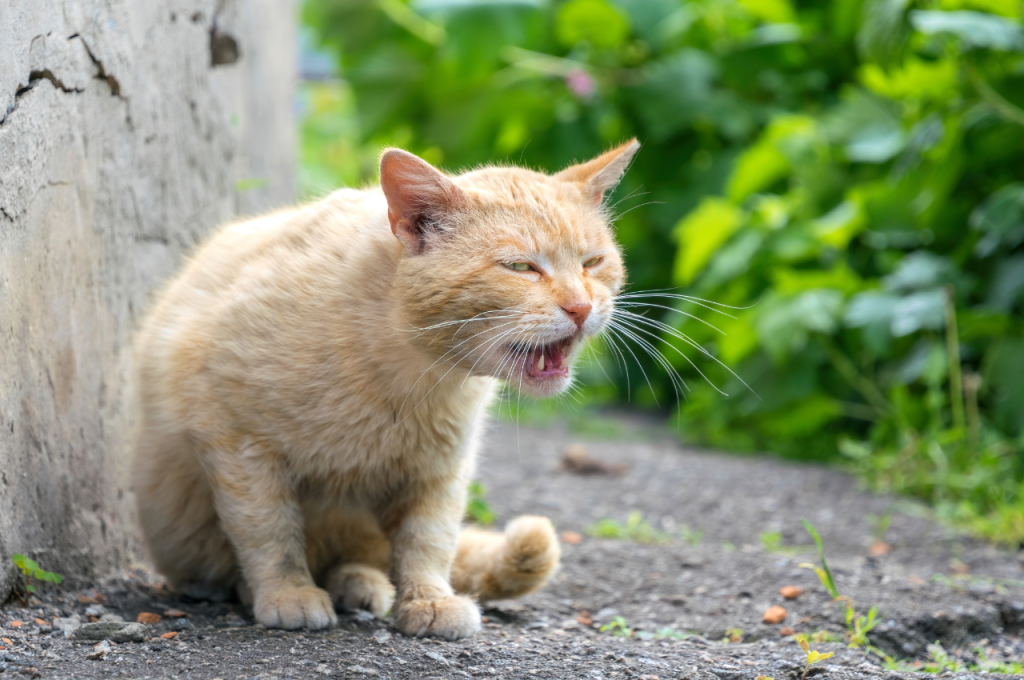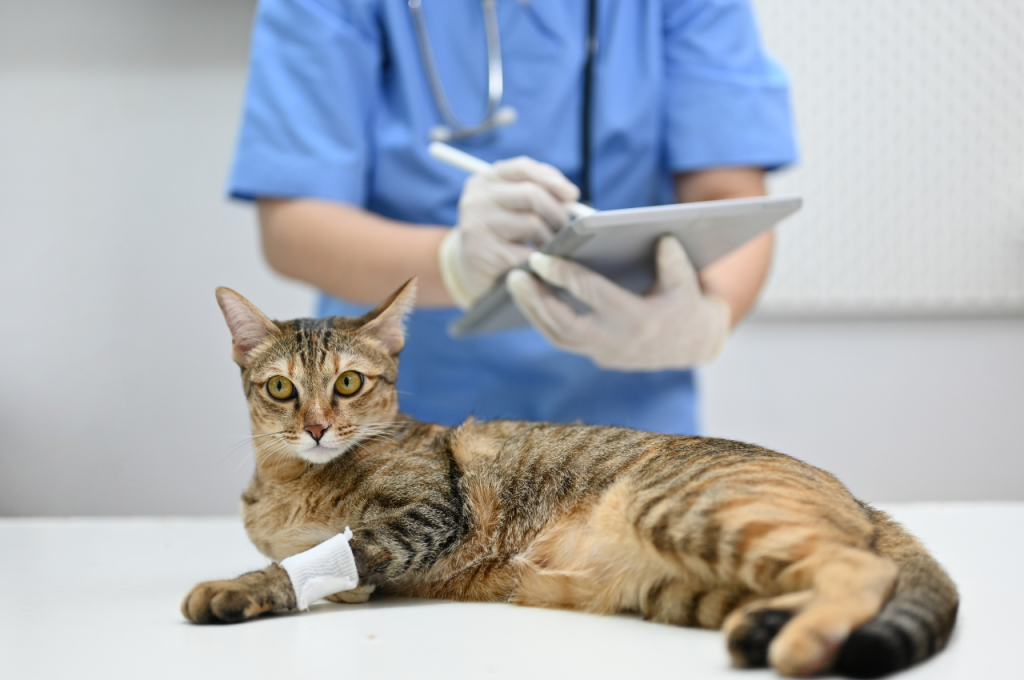To save an injured cat, it is crucial to prioritize its safety and seek immediate veterinary care. Providing prompt medical attention can help alleviate pain and prevent further complications for the feline.
When an injured cat crosses your path, it is essential to act swiftly and responsibly. Whether the cat has been involved in an accident, attacked by another animal, or is displaying signs of injury, taking the right steps can make a significant difference in saving its life. In this blog post, we will discuss the necessary actions to save an injured cat, from ensuring its safety to seeking veterinary assistance. By following these guidelines, you can provide the necessary care and support to help the injured cat on its road to recovery. So, let’s dive in and learn how to save an injured cat.
Recognizing a Cat in Distress
An injured cat may not always vocalize its pain, so it’s important to be able to recognize the signs of distress. Understanding your cat’s behavior and body language can help you provide timely care and attention. Here’s how you can recognize a cat in distress and take the necessary steps to help.

Signs of Injury
Physical signs such as limping, visible wounds, or bloodstains on fur. Changes in grooming habits, such as neglecting to groom or excessive licking at a specific area. Unusual vocalizations such as whimpering or excessive meowing.
Behavioral Clues
Hiding or seeking solitude, avoiding interaction with people or other pets. Changes in appetite or drinking habits, including loss of interest in food or water. Uncharacteristic aggression or withdrawal from affection and attention.
Initial Response to an Injured Cat
To save an injured cat, assess the situation calmly and approach slowly. Gently wrap the cat in a blanket and transport to a vet for immediate care. Administering first aid or CPR may be necessary in critical situations.
Safety First
When responding to an injured cat, safety must be your top priority. First, assess the situation from a safe distance to avoid further stress or danger to both you and the cat. Wear gloves to protect yourself and avoid direct contact with the cat’s wounds or potential aggressive behavior. Approach the cat calmly and slowly to prevent startling it, which could exacerbate its distress or injuries. If necessary, use a towel or blanket to gently cover and secure the cat, then carefully transport it to a safe location, such as a cat carrier. Always prioritize the cat’s safety and well-being while seeking immediate veterinary care to address its injuries.
Approach with Caution
When responding to an injured cat, it’s crucial to approach with caution to avoid further distress or injury. Start by observing the cat from a safe distance to gauge its condition and behavior. Injured cats may be scared or in pain, potentially leading to defensive or aggressive reactions. Slowly and calmly move closer, avoiding sudden movements or loud noises. If possible, use a soothing voice to help calm the cat. Wear gloves and use a towel or blanket to gently handle the cat if needed. Ensuring a cautious approach minimizes stress and helps prevent exacerbating any injuries. Seek immediate veterinary care to address the cat’s injuries properly.
Assessing The Situation
Assessing the situation when encountering an injured cat is crucial for providing the necessary care and support. By carefully evaluating the visible injuries and shock symptoms, you can effectively determine the severity of the situation and take appropriate action to help the cat.
Visible Injuries
When assessing an injured cat, start by observing for visible injuries such as cuts, bruises, or bleeding. Take note of any abnormalities in the cat’s posture or movement, which could indicate a potential injury. Additionally, check for any signs of limping or discomfort that may point to specific areas of injury.
Shock Symptoms
Shock symptoms can include rapid breathing, pale gums, or a weak pulse. It’s essential to monitor the cat’s overall demeanor and responsiveness as signs of shock can often be subtle. Pay close attention to any changes in behavior, as these could signal the onset of shock.
Providing Immediate Care
When providing immediate care to an injured cat, it is crucial to act swiftly and calmly. Here are the steps to follow:
First Aid Basics
- Assess the cat’s condition and surroundings.
- Handle the cat gently to prevent further injury.
- Check for breathing and heartbeat.
Managing Pain and Fear
- Speak softly to reassure the cat.
- Keep the cat warm and comfortable.
- Administer pain relief medication if available.
Handling and Transportation
To save an injured cat, handling and transportation are crucial. Approach the cat calmly and gently, using a towel or blanket to wrap it up and keep it still. Place it in a secure carrier and take it to a veterinarian as soon as possible for proper medical attention.

Handling and transporting an injured cat can be a tricky situation. You want to ensure the safety of the cat while also avoiding any further injury. In this section, we will discuss the different aspects of handling and transporting an injured cat to get them to the vet as soon as possible.
Secure Containment
The first step in handling an injured cat is to secure them in a safe and comfortable container. You can use a cardboard box or a carrier with a blanket or towel inside to provide comfort. Ensure that the container has adequate ventilation and is securely closed to prevent escape. It’s important to avoid moving the cat as much as possible to prevent further injury.
Traveling to The Vet
When transporting an injured cat, it’s important to keep them as calm and comfortable as possible. Avoid loud noises and sudden movements that could startle or stress the cat. If possible, cover the container with a towel or blanket to provide a sense of security. Ensure that the container is securely placed in the car and won’t move around during travel. If the cat is severely injured and requires immediate medical attention, it’s best to call ahead to the vet clinic to inform them of the situation. This will allow them to prepare for the cat’s arrival and provide any necessary assistance upon arrival.
In conclusion, handling and transporting an injured cat requires patience, care, and attention to detail. By following these guidelines, you can ensure the safety and well-being of the cat while getting them the medical attention they need.
Professional Veterinary Assistance
When an injured cat needs help, professional veterinary assistance is crucial for saving its life. Quick action, proper evaluation, and expert care can make a significant difference in the cat’s recovery and overall well-being.
Emergency Services
In case of urgent need, contact a veterinary clinic immediately.
Follow-up Treatments
Continue care as directed by the veterinarian post initial treatment. Professional veterinary assistance is crucial for saving an injured cat. In emergencies, seek immediate care from a veterinary clinic. Following initial treatment, adhere to the veterinarian’s instructions for follow-up care.
Recovery and Rehabilitation
To save an injured cat, start by carefully assessing its condition and providing immediate first aid. Then, gently transport the cat to a veterinarian for professional care. Once the cat is stabilized, follow the veterinarian’s guidance for recovery and rehabilitation, which may include medication, rest, and physical therapy to help the cat regain its strength and mobility.
Home Care Tips
When it comes to nursing an injured cat back to health, the recovery and rehabilitation phase is crucial. Providing your furry friend with proper home care can make all the difference in their recovery process. Here are some tips to help you care for your injured cat at home:
- Keep your cat in a quiet, warm, and comfortable room with access to food, water, and a litter box.
- Administer medication as prescribed by your veterinarian.
- Change bandages and clean wounds as instructed by your veterinarian.
- Make sure your cat is eating and drinking regularly.
- Provide your cat with plenty of love and attention to help reduce stress and anxiety.
Monitoring Progress
It is important to monitor your cat’s progress during their recovery and rehabilitation process. Here are some signs to look out for:
| Signs of Improvement | Signs of Decline |
| Eating and drinking regularly | Loss of appetite or refusing food |
| Increased energy and activity levels | Lethargy or lack of movement |
| Clean and healing wounds | Infection or worsening of wounds |
| Normal breathing and heart rate | Difficulty breathing or abnormal heart rate |
If you notice any signs of decline, contact your veterinarian immediately. Regular check-ups with your veterinarian can also help monitor your cat’s progress and ensure they are on the path to recovery. By providing your injured cat with proper home care and monitoring their progress, you can help them recover and rehabilitate successfully.
Preventive Measures
To save an injured cat, take preventive measures to ensure its safety. Assess the situation carefully and handle the cat gently to avoid causing further harm. Seek immediate veterinary assistance to provide the necessary care and treatment for the injured feline.
Prevention is always better than cure. When it comes to taking care of an injured cat, it is essential to take preventive measures to ensure their safety. Here are some preventive measures that can help you save an injured cat.
Creating a Safe Environment
Creating a safe environment is the first step towards preventing injuries in cats. Make sure to keep your house clean and free of any harmful substances that can harm your feline friend. Store chemicals, cleaning products, and medications in a secure place that is out of your cat’s reach. Also, keep sharp objects like knives and scissors away from your cat’s paws.
Education and Awareness
Education and awareness play a vital role in preventing cat injuries. Educate yourself and your family members about cat behavior and how to handle them. It is essential to teach children not to pull cats’ tails or ears and not to play rough with them. Also, make sure to supervise your cat’s interaction with other pets to avoid any injuries.
Regular Veterinary Check-Ups
Regular veterinary check-ups are crucial to keeping your cat healthy and avoiding any injuries. Make sure to take your cat to the veterinarian for regular check-ups and vaccinations. This will help you identify any potential health issues before they become severe.

Proper Nutrition
Proper nutrition is essential for your cat’s health and well-being. Make sure to provide your cat with a balanced diet that meets all their nutritional needs. A well-nourished cat will have a healthy immune system, which can help them recover faster from injuries.
In conclusion, taking preventive measures can help you save an injured cat. By creating a safe environment, educating yourself and your family members, regular veterinary check-ups, and proper nutrition, you can provide your feline friend with a healthy and happy life.
Conclusion
In caring for an injured cat, swift action and gentle handling are key. Providing immediate medical attention and creating a safe, quiet space for recovery is essential. Remember, patience and love go a long way in helping a feline friend heal and thrive.
